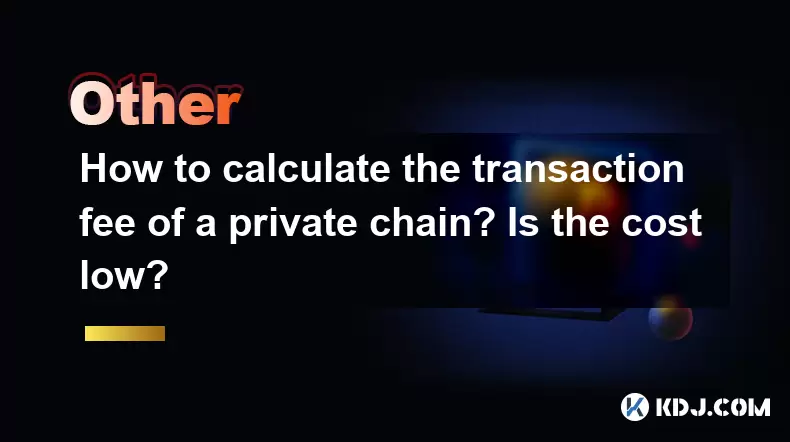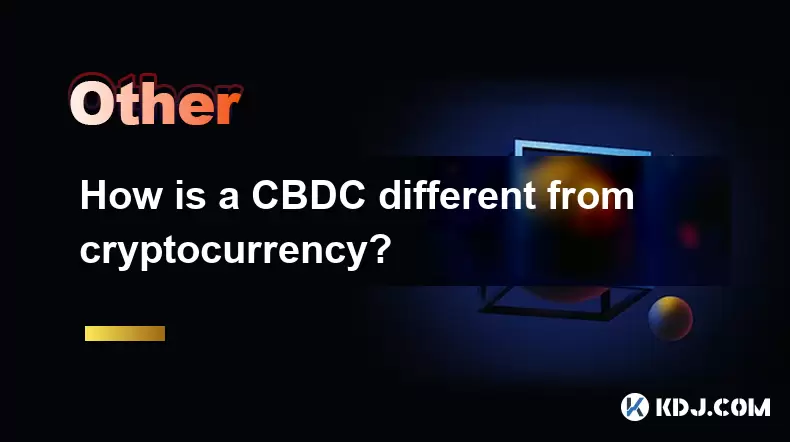-
 Bitcoin
Bitcoin $117700
-1.00% -
 Ethereum
Ethereum $4458
-3.91% -
 XRP
XRP $3.119
0.14% -
 Tether USDt
Tether USDt $1.001
-0.02% -
 BNB
BNB $836.6
-1.56% -
 Solana
Solana $189.5
-3.90% -
 USDC
USDC $0.9998
-0.02% -
 Dogecoin
Dogecoin $0.2335
1.29% -
 Cardano
Cardano $0.9642
1.51% -
 TRON
TRON $0.3539
-1.19% -
 Hyperliquid
Hyperliquid $47.41
-1.84% -
 Chainlink
Chainlink $21.92
-3.28% -
 Stellar
Stellar $0.4286
-0.23% -
 Sui
Sui $3.724
-3.29% -
 Bitcoin Cash
Bitcoin Cash $594.8
-0.78% -
 Ethena USDe
Ethena USDe $1.001
0.04% -
 Hedera
Hedera $0.2501
-2.06% -
 Avalanche
Avalanche $23.96
-4.87% -
 Litecoin
Litecoin $119.0
-2.32% -
 Toncoin
Toncoin $3.473
0.82% -
 UNUS SED LEO
UNUS SED LEO $9.596
0.17% -
 Shiba Inu
Shiba Inu $0.00001301
-0.39% -
 Uniswap
Uniswap $11.03
-0.25% -
 Polkadot
Polkadot $3.935
-2.62% -
 Dai
Dai $1.000
0.01% -
 Bitget Token
Bitget Token $4.564
-1.76% -
 Cronos
Cronos $0.1512
-4.11% -
 Ethena
Ethena $0.7306
-1.09% -
 Pepe
Pepe $0.00001087
-2.68% -
 Aave
Aave $300.2
-4.00%
How to calculate the transaction fee of a private chain? Is the cost low?
Transaction fees on private chains can be lower due to controlled environments and customizable fee structures, but costs vary based on network policies and usage.
May 16, 2025 at 05:14 am

How to Calculate the Transaction Fee of a Private Chain? Is the Cost Low?
In the world of cryptocurrencies, understanding the transaction fees associated with different types of blockchains, including private chains, is crucial for users and developers alike. A private chain, also known as a permissioned blockchain, is a blockchain network where access and participation are restricted to a specific group of users. This article will delve into the intricacies of calculating transaction fees on a private chain and explore whether these costs are typically low.
Understanding Private Chain Transaction Fees
Transaction fees on a private chain can vary based on several factors, including the network's design, the specific blockchain platform being used, and the policies set by the administrators. Unlike public blockchains, where transaction fees are often determined by the network's congestion and the size of the transaction data, private chains allow for more control over these costs.
In a private chain, the fee structure might be set by the organization or consortium managing the network. This can be a fixed fee per transaction, a fee based on the computational resources used, or even a fee that is waived entirely for certain types of transactions. The flexibility in fee structures is one of the advantages of private chains, allowing for tailored solutions that meet the specific needs of the network's users.
Calculating Transaction Fees on a Private Chain
To calculate the transaction fee on a private chain, you need to consider the following steps:
Identify the Fee Structure: First, you need to understand the fee structure set by the administrators of the private chain. This could be a fixed fee, a variable fee based on transaction size or complexity, or a combination of both.
Assess Transaction Details: Next, evaluate the specifics of the transaction you wish to perform. This includes the size of the transaction data, the type of transaction (e.g., simple transfer, smart contract execution), and any additional computational resources required.
Apply the Fee Calculation: Once you have the fee structure and transaction details, apply the fee calculation method. For example, if the fee is a fixed amount, simply add this to your transaction. If it's based on transaction size, multiply the size by the fee rate per unit of data.
Consider Network Policies: Some private chains may have policies that affect transaction fees, such as discounts for frequent users or higher fees during peak times. Ensure you account for these policies in your calculation.
Examples of Fee Calculation on Popular Private Chain Platforms
Different private chain platforms have their own methods for calculating transaction fees. Let's look at a few examples:
Hyperledger Fabric: In Hyperledger Fabric, transaction fees can be configured by the network administrators. If a fixed fee is set, the fee for each transaction is straightforward. For instance, if the fee is set at 0.01 tokens per transaction, then every transaction will incur this fee.
Corda: Corda, another popular private chain platform, allows for more complex fee structures. Fees might be based on the computational resources used by the transaction. If a transaction requires more processing power, the fee could be higher. For example, a simple asset transfer might cost 0.005 tokens, while a more complex smart contract execution might cost 0.02 tokens.
Quorum: Quorum, developed by JPMorgan, also offers flexibility in fee structures. Administrators can set fees based on various factors, including transaction size and network usage. For instance, a transaction of 100 bytes might incur a fee of 0.001 tokens, while a larger transaction of 1000 bytes might cost 0.01 tokens.
Is the Cost of Transaction Fees on Private Chains Low?
The cost of transaction fees on private chains can indeed be lower than those on public blockchains for several reasons:
Controlled Environment: Since private chains operate in a controlled environment with fewer participants, there is less competition for block space, which can keep fees low.
Customizable Fee Structures: The ability to customize fee structures allows administrators to set fees that are appropriate for their specific use case, often resulting in lower costs compared to public chains where fees can spike during high demand.
No Mining Rewards: Unlike public blockchains, private chains do not typically involve mining, which means there are no mining rewards to factor into the transaction fees, further reducing costs.
However, the actual cost can vary widely depending on the specific policies and configurations of the private chain. For instance, a private chain used by a financial institution might have higher fees to cover the costs of maintaining the network and ensuring high security standards, while a private chain used for internal company processes might have very low or even zero fees.
Factors Affecting Transaction Fee Costs on Private Chains
Several factors can influence the cost of transaction fees on private chains:
Network Usage: Even on private chains, higher network usage can lead to increased fees, although this is less common than on public chains.
Transaction Complexity: More complex transactions, such as those involving smart contracts, might incur higher fees due to the additional computational resources required.
Security and Compliance: Private chains used in industries with strict regulatory requirements might have higher fees to cover the costs of maintaining compliance and security.
Administrative Policies: The policies set by the network administrators can significantly impact the fees. For example, a policy that waives fees for certain types of transactions can lower the overall cost.
Practical Steps to Minimize Transaction Fees on Private Chains
If you are a user or developer on a private chain and want to minimize transaction fees, consider the following steps:
Optimize Transaction Size: Reduce the size of your transactions by minimizing the amount of data included. This can be particularly effective if the fee structure is based on transaction size.
Batch Transactions: If possible, batch multiple transactions into a single transaction to reduce the number of individual fees you need to pay.
Use Fee Discounts: Take advantage of any fee discounts or waivers offered by the network. This might include discounts for frequent users or specific types of transactions.
Negotiate with Administrators: If you are part of the organization managing the private chain, you might be able to negotiate lower fees or a more favorable fee structure.
Frequently Asked Questions
Q: Can transaction fees on private chains be completely eliminated?
A: In some cases, private chains can be configured to have zero transaction fees, especially if the network is used for internal purposes within an organization. However, this depends on the specific policies set by the administrators and the financial model of the network.
Q: How do transaction fees on private chains compare to those on public chains?
A: Generally, transaction fees on private chains are lower than those on public chains due to the controlled environment and customizable fee structures. Public chains often have higher fees due to competition for block space and the need to incentivize miners.
Q: Are there any tools available to help calculate transaction fees on private chains?
A: Yes, some private chain platforms offer built-in tools or APIs that can help calculate transaction fees based on the network's fee structure. Additionally, third-party software and services might be available to assist with fee calculations and optimizations.
Q: Can the fee structure on a private chain be changed after it is set?
A: Yes, the fee structure on a private chain can be changed by the network administrators. This flexibility is one of the advantages of private chains, allowing for adjustments based on the evolving needs of the network and its users.
Disclaimer:info@kdj.com
The information provided is not trading advice. kdj.com does not assume any responsibility for any investments made based on the information provided in this article. Cryptocurrencies are highly volatile and it is highly recommended that you invest with caution after thorough research!
If you believe that the content used on this website infringes your copyright, please contact us immediately (info@kdj.com) and we will delete it promptly.
- Kazakhstan's Crypto Leap: Bitcoin ETF and Central Asia's Digital Finance Future
- 2025-08-13 12:45:19
- BlockDAG Presale Blazes Past $371M: Fundraising Frenzy Fuels Crypto Sensation
- 2025-08-13 13:05:21
- Meme Coins: Chasing the 2025 Surge – Which Will Moonshot?
- 2025-08-13 10:25:23
- Bitcoin's Wild Ride: Rally, Pullback, and What's Next
- 2025-08-13 10:25:23
- Bitcoin, Bitmax, and Institutional Demand: A New Era of Crypto Investment
- 2025-08-13 10:45:12
- Solana, ROAM, and Airdrops: What's the Buzz in 2025?
- 2025-08-13 11:35:13
Related knowledge

How does blockchain enable Web3?
Aug 13,2025 at 11:35am
Understanding the Role of Blockchain in Web3 InfrastructureBlockchain serves as the foundational layer upon which Web3 is built, enabling a decentrali...

How is a CBDC different from cryptocurrency?
Aug 12,2025 at 09:21am
Understanding the Core Nature of CBDCsA Central Bank Digital Currency (CBDC) is a digital form of a country’s sovereign currency, issued and regulated...

What is a CBDC (Central Bank Digital Currency)?
Aug 13,2025 at 11:36am
Understanding the Concept of a Central Bank Digital CurrencyA CBDC (Central Bank Digital Currency) is a digital form of a country’s fiat currency that...

How can zero-knowledge proofs enhance privacy on a blockchain?
Aug 12,2025 at 02:15am
Understanding Zero-Knowledge Proofs in Blockchain ContextZero-knowledge proofs (ZKPs) are cryptographic protocols that allow one party (the prover) to...

How does blockchain governance work?
Aug 13,2025 at 11:35am
Understanding Blockchain GovernanceBlockchain governance refers to the mechanisms and processes through which decisions are made about the development...

What is on-chain vs. off-chain data?
Aug 13,2025 at 11:35am
Understanding On-Chain Data in CryptocurrencyOn-chain data refers to all information that is permanently recorded and stored directly on a blockchain....

How does blockchain enable Web3?
Aug 13,2025 at 11:35am
Understanding the Role of Blockchain in Web3 InfrastructureBlockchain serves as the foundational layer upon which Web3 is built, enabling a decentrali...

How is a CBDC different from cryptocurrency?
Aug 12,2025 at 09:21am
Understanding the Core Nature of CBDCsA Central Bank Digital Currency (CBDC) is a digital form of a country’s sovereign currency, issued and regulated...

What is a CBDC (Central Bank Digital Currency)?
Aug 13,2025 at 11:36am
Understanding the Concept of a Central Bank Digital CurrencyA CBDC (Central Bank Digital Currency) is a digital form of a country’s fiat currency that...

How can zero-knowledge proofs enhance privacy on a blockchain?
Aug 12,2025 at 02:15am
Understanding Zero-Knowledge Proofs in Blockchain ContextZero-knowledge proofs (ZKPs) are cryptographic protocols that allow one party (the prover) to...

How does blockchain governance work?
Aug 13,2025 at 11:35am
Understanding Blockchain GovernanceBlockchain governance refers to the mechanisms and processes through which decisions are made about the development...

What is on-chain vs. off-chain data?
Aug 13,2025 at 11:35am
Understanding On-Chain Data in CryptocurrencyOn-chain data refers to all information that is permanently recorded and stored directly on a blockchain....
See all articles

























































































